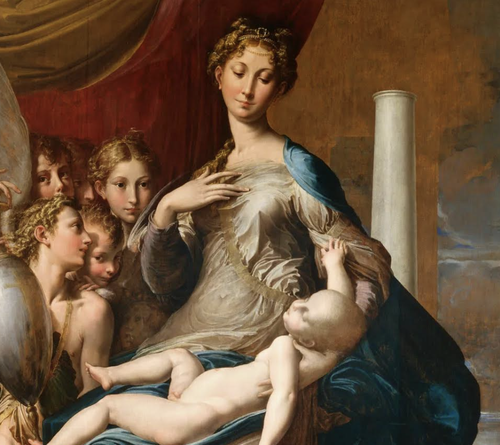
-
- Sept. 26, 2024 / 11 a.m. to noon
- Add to mobile calendar
- Add to Google calendar
Mannerism originated primarily in Italy. It lasted from approximately 1530 to 1600 and was a reaction to the harmonious classicism and idealized naturalism of High Renaissance art as practiced by Leonardo da Vinci, Michelangelo, and Raphael. Mannerist artists created a style that was characterized by artificially and unique coloration. A thoroughly self-conscious cultivation of elegance and technical facility are part of this artistic movement. Sophisticated indulgence in the bizarre helped to distinguish its artists.
The figures in Mannerist art frequently had graceful, but strangely elongated limbs, small heads, and stylized facial features while their poses seemed difficult or contrived. Painters such as Jacopo Pontormo and Francesco Parmigianino exemplified this unusual and fascinating style of painting. Mannerism however began to wane after 1600 as the Baroque began to take hold throughout Europe.

Join us live on Zoom: https://us06web.zoom.us/j/86148328476?pwd=UmpTRGhYZS9UQnAxeHd6aHpCbENFdz09
Note that you will be muted upon entry and that this talk is being recorded as well as live-streamed. Please save all questions for the end.

Join us live on Facebook: https://www.facebook.com/events/1066144261354895
Note that this talk is being recorded as well as live-streamed. Please save all questions for the end.
✥ ✥ ✥ ✥ ✥
You can find all of our previous Virtual Talks on our Facebook Page (@timkenmuseum). If you would like to support the continuation of our free tours and education programming, please consider donating to the Timken Museum of Art at https://www.timkenmuseum.org/join-support/your-giving/.